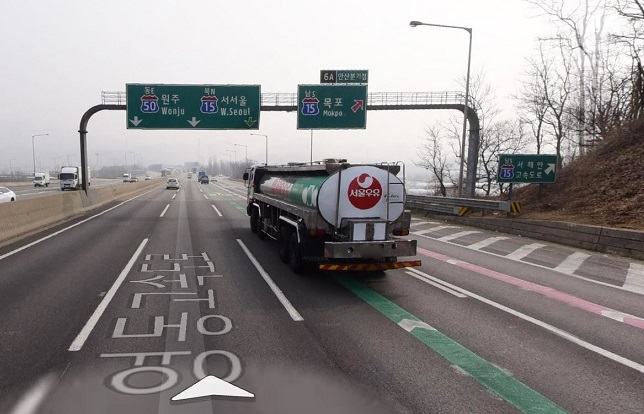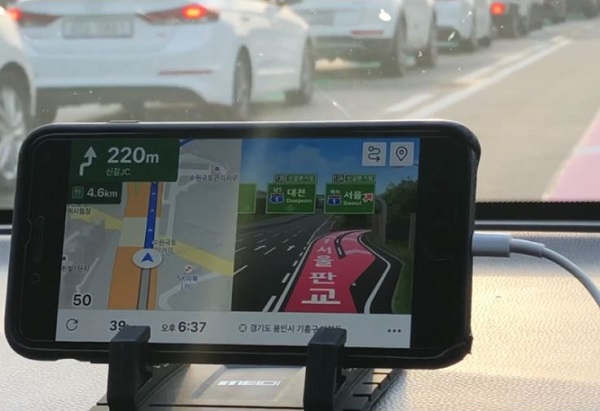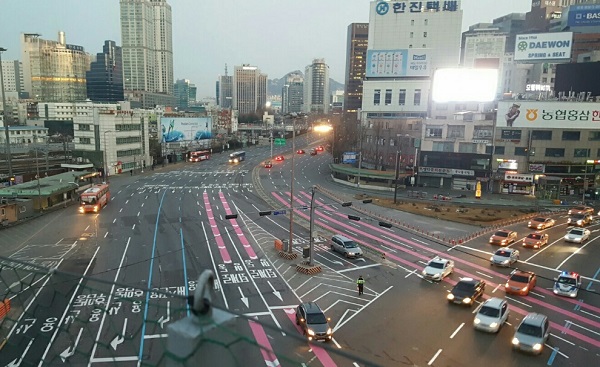The “Firsts” and “Bests” of Government Innovation
The Korean Government will accredit the “Firsts” of our innovations that contributed to the public’s comfort and safety, and select the “Best” cases of government innovation to spread as examples to our many institutions.
The First
Color traffic lane markings on road
- Korea Expressway Corporation
- 2023-12-29

The Korea Expressway Corporation (KEC), in 2011, installed ‘Color Guidance Lanes’ at expressways for the first time in the nation.
Increasing Safety and Reducing Confusion! No more trouble with directions for the public. |
Content
The Seoul Station intersection in Seoul. ⓒ
City
of Seoul Website √ Accomplishments and expansion |
■ With just a few lines, an innovation on the road

Korea’s first color guidance lanes, visible at the
Ansan junction of the West Coast Expressway
ⓒ Naver Maps Screen capture
The star of this innovation is Mr. Yoon, Seok-deok, an employer of the KEC who worked at the Gunpo office at the time. His direct inspiration for developing the idea came from a traffic accident on March 2011, when a passenger vehicle and cargo truck crossed ways while changing lanes, leading to a fatal accident.
Given directions at work to develop “a solution that even children could understand” Mr. Yoon headed home. At home, after seeing his children playing with paint and crayons, he devised an idea to “color the roads”.
There were many obstacles to apply this idea in reality and bring forth innovation. At the time, there were only four colors (white, yellow, blue and red) permitted to be painted on roads. It was difficult to receive cooperation from related government agencies, as painting a different color, even for path guidance, would go against road and traffic legislation. Changing such legislation also took a good amount of time. After countless efforts and receiving active cooperation from Senior Inspector Lim, Yong Hoon of the Incheon Metropolitan Police Agency (Stationed at the 11th Substation at the time), Mr. Yoon succeeded in introducing the first color guidance lanes to the Ansan junction.
* Utilization of traffic limitation
agreements and indemnification policies for active administration, etc.
■ Color Guidance Lanes, visible in countless locations.
The Ansan junction had an average count of 25 traffic accidents per year, but following the implementation of color guidance lanes, the following six months showed a substantial reduction in incidents (3 in total).
* As of March 2023, 905 expressway
locations in the nation have the lanes implemented, with substantially more
locations installed for metropolitan roads.

[Left] Traffic navigation software in use,
showing directions in connection with the color guidance lane system ⓒ
MOLIT
blog [Right] Color guidance Lanes, painted at a
congested inner-city intersection. ⓒ National Police
Agency Blog

